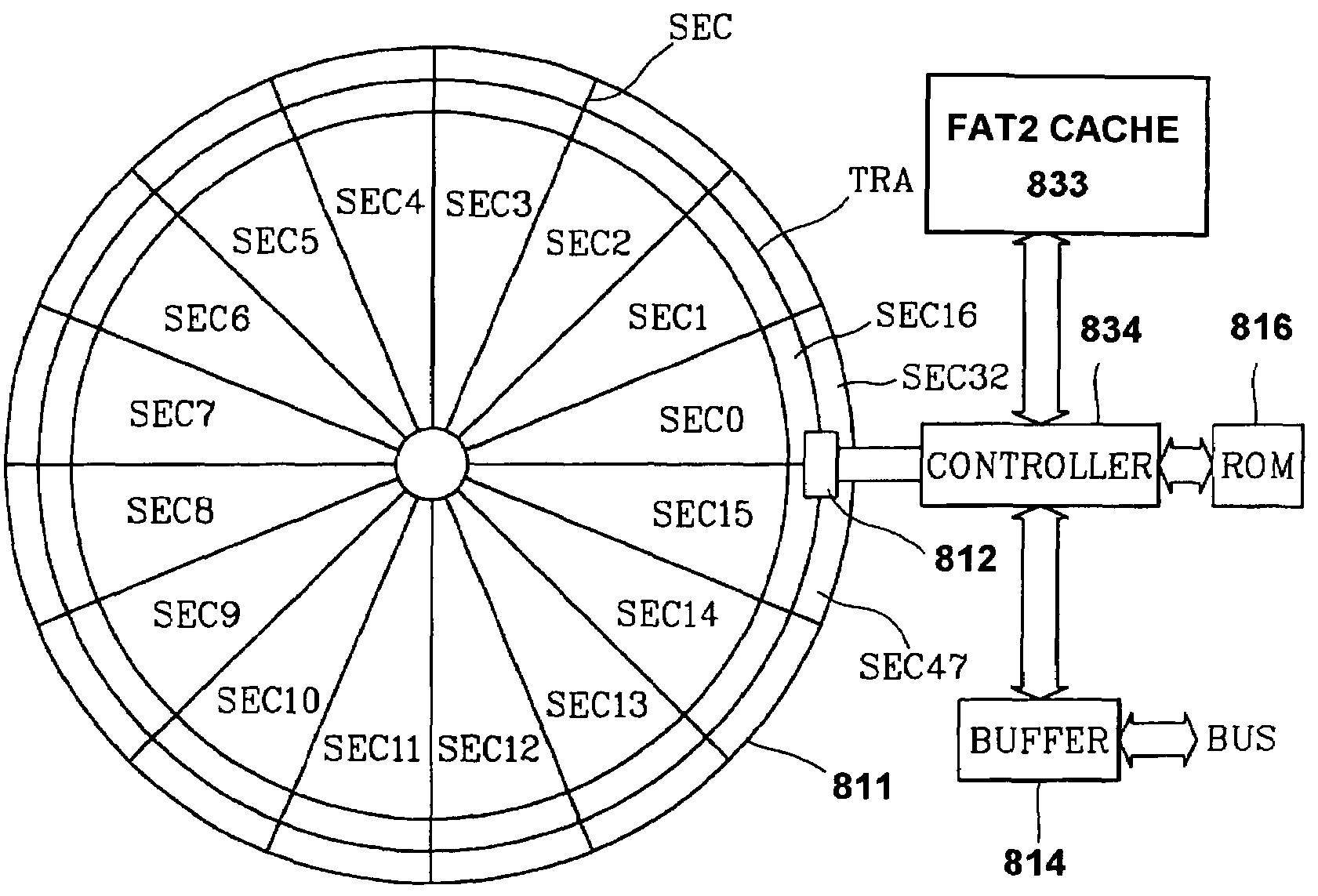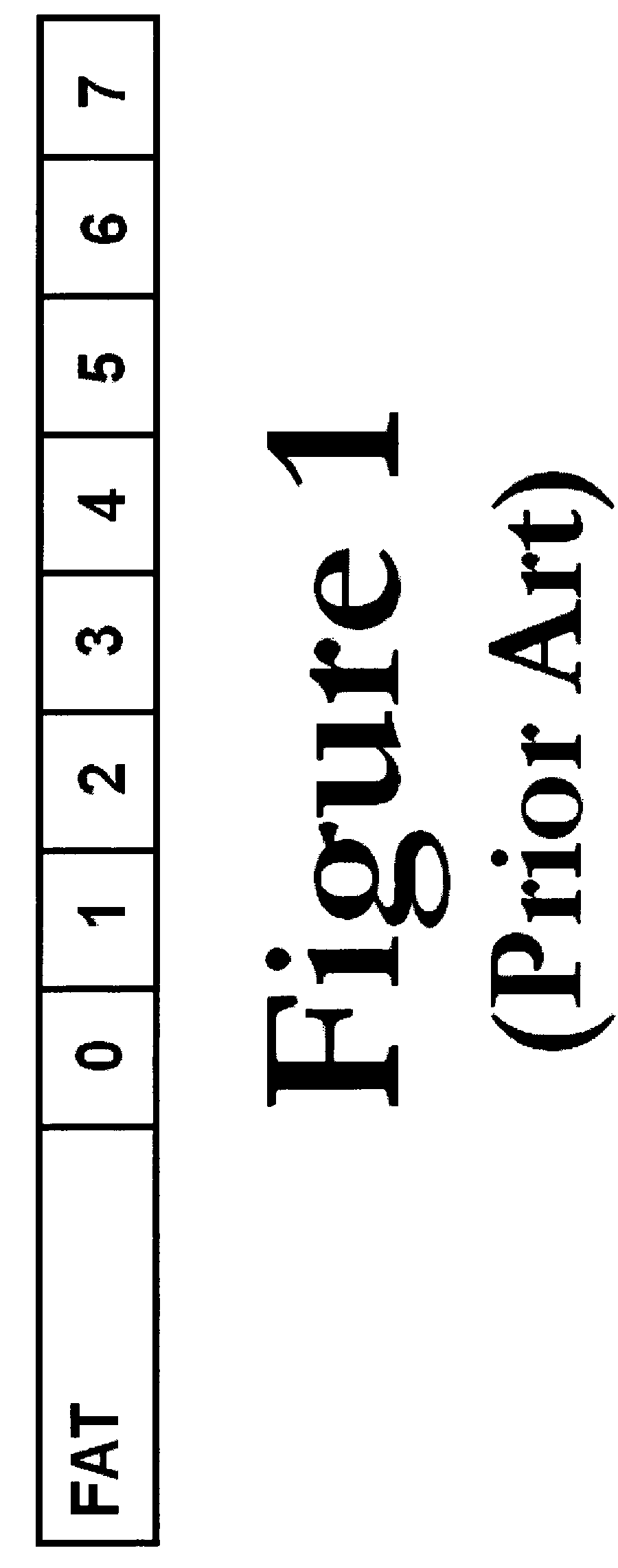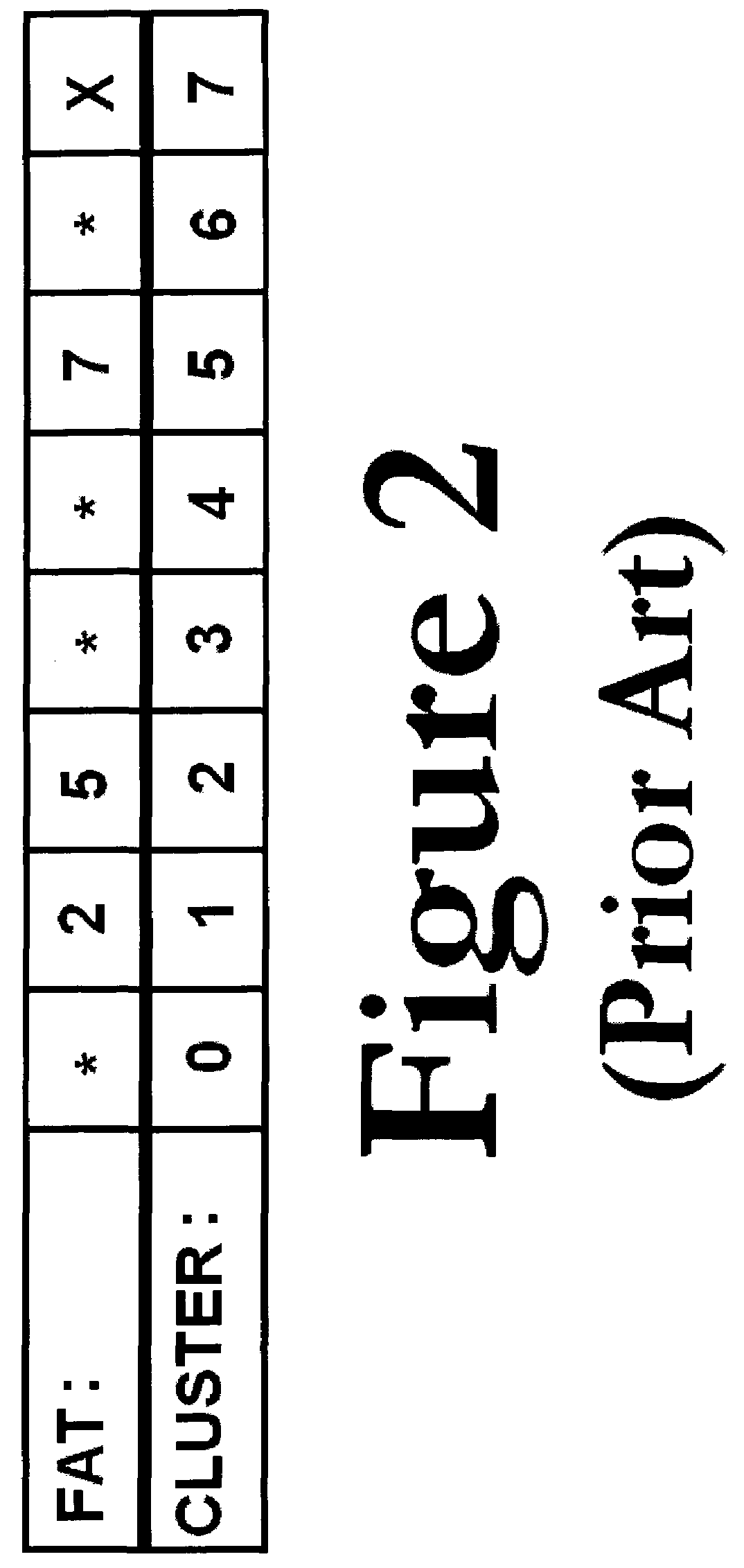Intelligent caching scheme for streaming file systems
a file system and intelligent technology, applied in the field of file allocation tables, can solve the problems of insufficient buffering and caching, inability to allocate resources, and inability to use large memory resources for buffering and caching, etc., and achieve the effect of high speed
- Summary
- Abstract
- Description
- Claims
- Application Information
AI Technical Summary
Benefits of technology
Problems solved by technology
Method used
Image
Examples
Embodiment Construction
[0041]FIG. 5 is a diagram illustrating the relationship between clusters, Superclusters and the FAT1 and FAT2 tables on the HDD. As in FIG. 1, the clusters in this example as illustrated as clusters 0-7. The highly simplified drawing of FIG. 5 is for purposes of illustration only and does not represent the actual number of clusters on a disk. In the example of FIG. 5, each Supercluster is the size of four regular clusters. Other numbers of clusters per Supercluster may be used without departing from the spirit and scope of the present invention. Superclusters 0′ and 1′ are shown concurrent with clusters 0-3 and 4-7, respectively. Thus, data may be written to the same portions of the HDD, which may be concurrently formatted as clusters and Superclusters. The nature of the data to be written (e.g., small JPEG files versus streaming video) may determine whether data is written as clusters or Superclusters.
[0042]In addition to the traditional FAT, shown here as FAT1, a second Superclust...
PUM
 Login to View More
Login to View More Abstract
Description
Claims
Application Information
 Login to View More
Login to View More - R&D
- Intellectual Property
- Life Sciences
- Materials
- Tech Scout
- Unparalleled Data Quality
- Higher Quality Content
- 60% Fewer Hallucinations
Browse by: Latest US Patents, China's latest patents, Technical Efficacy Thesaurus, Application Domain, Technology Topic, Popular Technical Reports.
© 2025 PatSnap. All rights reserved.Legal|Privacy policy|Modern Slavery Act Transparency Statement|Sitemap|About US| Contact US: help@patsnap.com



